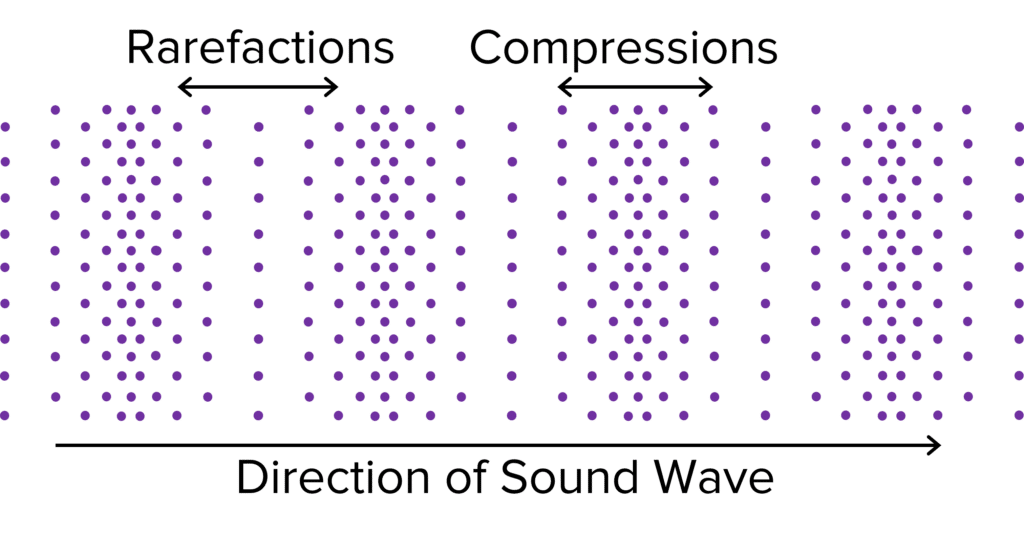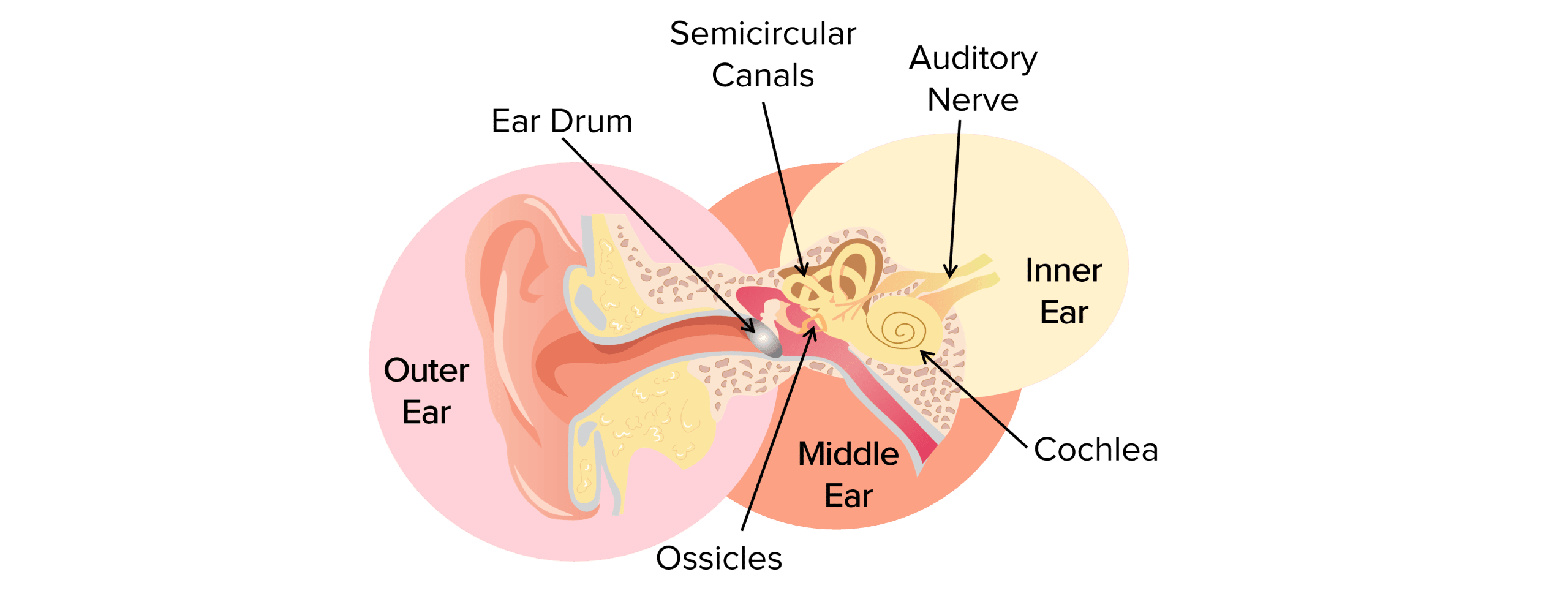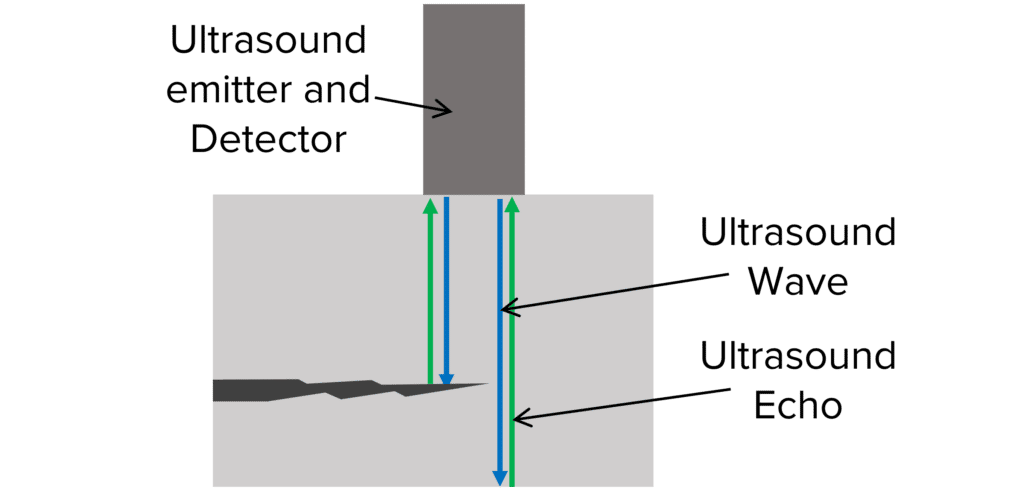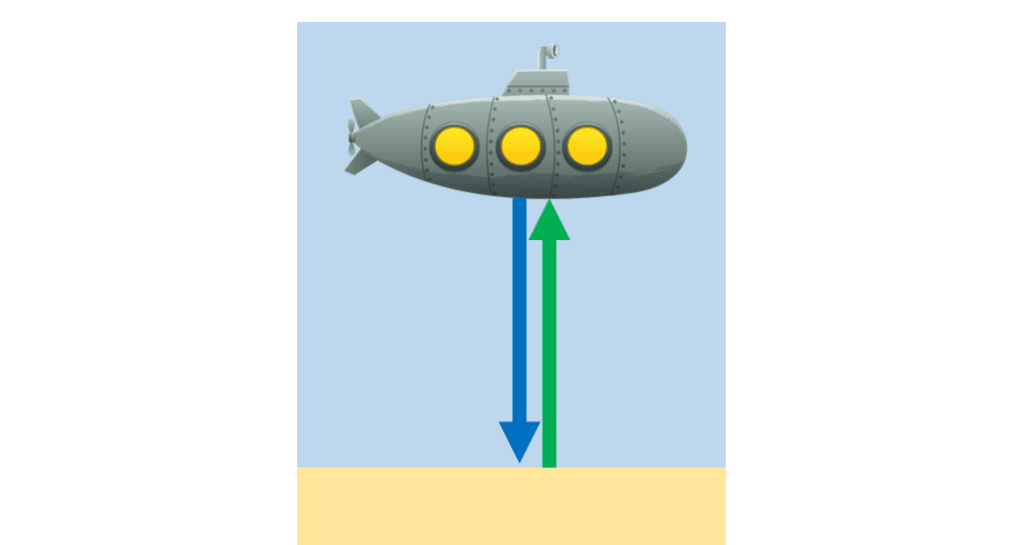Sound Waves
Sound Waves Revision
Sound Waves
Sound waves are caused by vibrating particles and are an example of a longitudinal wave. Human ears are specially adapted to hear sound waves and we can make use of certain types of sound waves called ultrasound waves in medicine and echolocation technology.
How Sound Travels

Sound waves are caused by vibrating objects. These vibrations then travel through the medium surrounding the object such as air or water.
Sound is passed through the medium by the particles in the medium which vibrate parallel to the direction the sound wave travels. This means that sound is a longitudinal wave. Compressions and rarefactions can be observed in the particles of the medium as they vibrate backwards and forwards.
Sound waves travel fastest in solids because the particles are closer together. This means that the vibrations are passed on quicker.
Sound cannot travel through space because there is no medium for it to travel through. This means that there are no particles to pass on the vibrations.
How we Hear Sound
Sound waves travel into your ear and cause the ear drum to vibrate. The ear drum passes on the vibrations to the ossicles (very small bones), through the semicircular canals and finally to the cochlea.
The cochlea coverts the vibrations to electrical signals which are transported to your brain along the auditory nerve.
The frequencies of sound waves that you can hear is limited by the size of your ear drum. Usually humans can hear within the range 20\text{ Hz}-20\text{ kHz}. Outside of this range, a microphone may pick up the sound wave but you wont hear anything.

Ultrasound
Ultrasound waves are sound waves with frequencies above 20 \, 000 \text{ Hz}. This means that they can’t be heard by the human ear.
Like all waves, sound and ultrasound waves can be reflected and refracted. Echoes are reflections of sound. Some uses of reflection and refraction of ultrasound are:

Medical Imaging
Ultrasound waves can pass through the body. However, when they reach a tissue boundary, some of the wave is reflected back. When ultrasound waves are projected into the body, the time taken for the same waves to be reflected back out of the body allows us to work out how far into the body the tissue boundary is. This can be processed by a computer to create an image of inside the body.
A common application of ultrasound imaging is pre-natal imaging of a foetus. This is much safer than imaging the foetus with X-rays because sound waves are non-ionising.

Industrial Imaging
Similar to in medical imaging, ultrasound can be emitted into pipes or materials to find out about the inner structure of the material. Usually, the ultrasound wave will be reflected from the far side of the material. However, if there is a fault in the material it will be reflected sooner. The time taken for the echo to return to the detector is used to determine the position of the fault.

Echolocation
Ultrasound can be used by boats and submarines to measure the depth of water or locate objects under the water. The time taken for ultrasound waves to reflect off the sea bed and return to the boat or submarine tells us how much distance there is between the sea bed and the bottom of the boat or submarine.
Sound Waves Example Questions
Question 1: Explain why sound cannot travel through space.
[3 marks]
Sound waves travel by passing vibrations between particles. In space, there are no particles to vibrate/it is a vacuum and hence there is nothing for waves to travel through.
Question 2: Put the following parts of the ear in order of when a sound wave entering the ear reaches them:
- Cochlea
- Ear Drum
- Auditory Nerve
- Ossicles
- Semicircular Canals
[2 marks]
- Ear Drum
- Ossicles
- Semicircular Canals
- Cochlea
- Auditory Nerve
Question 3: A student uses a speaker to create a sound with frequency 15 \, 000\text{ Hz}. The student states that this is an ultrasound wave. Is the student correct? Explain your answer.
[2 marks]
The student is incorrect.
Ultrasound waves are sound waves with frequencies above \bold{20 \, 000 \textbf{ Hz}}
Question 4: Why is pre-natal foetal imaging performed with ultrasound rather than X-rays?
[2 marks]
Ultrasound is safer than X-ray imaging.
This is because X-rays are ionising so can damage cells and DNA.
allow “could harm the foetus” for 1 mark.


